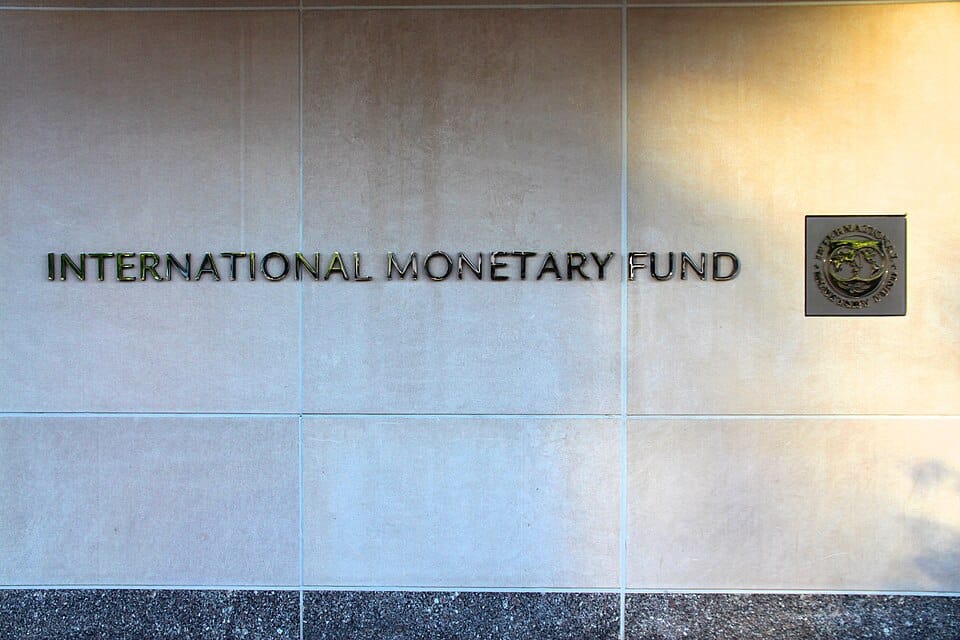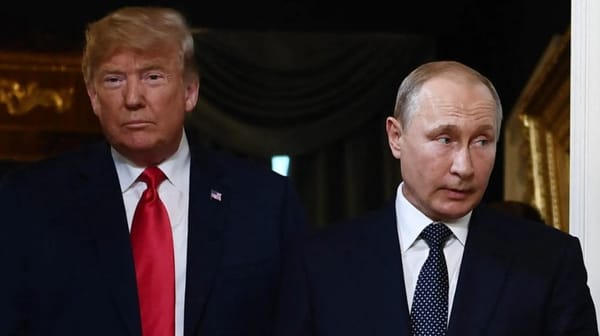IMF and Market Analysts Warn of Slower U.S. Growth Due to Tariffs

Introduction
The International Monetary Fund (IMF) has sharply downgraded its U.S. growth forecast for 2025, warning that President Trump’s sweeping tariffs and the resulting global trade tensions are acting as a major drag on the American and world economies. In its April 2025 World Economic Outlook, the IMF cut its U.S. growth projection to 1.8%, down nearly a full percentage point from its January estimate of 2.7%[1][2][3][4]. The IMF attributed about half of this downgrade to the economic repercussions of new tariffs, which have contributed to softer demand, higher inflation, and a climate of heightened policy uncertainty. The report also raised the U.S. inflation forecast by one percentage point, now projecting inflation at 3% for the year[3:1][4:1]. The IMF’s analysis underscores a growing global concern that U.S. trade policy is not only slowing domestic growth but also dampening global economic prospects[2:1][5][6][7].
I. The Tariff Shock: Scope and Immediate Effects
A. Century-High Tariff Levels
The IMF and market analysts have described the current U.S. tariff regime as the most restrictive in a century. Since April 2, President Trump’s administration has imposed “reciprocal” tariffs on nearly all U.S. trading partners, with rates as high as 145% on Chinese imports and a 10% baseline on most other countries[1:1][2:2][3:2][5:1][4:2]. Although some higher rates have been paused for 90 days, the effective U.S. tariff rate remains around 25%—levels not seen in generations[5:2][4:3].
China, in turn, retaliated with tariffs of up to 125% on American goods, further escalating the trade conflict. The IMF’s forecast, finalized in early April, incorporates these tariffs but does not reflect subsequent pauses or exemptions for certain products[1:2][2:3][4:4].
B. Market and Business Reaction
The introduction of these tariffs has unsettled financial markets, with the S&P 500 dropping 9% since the measures were announced[1:3]. Businesses and investors are grappling with uncertainty over supply chains, cost structures, and access to international markets. According to the IMF, this unpredictability is itself a major negative shock to economic activity, as firms delay investment and hiring decisions while they assess the new rules of global trade[3:3][5:3][6:1].
II. IMF’s Growth and Inflation Forecasts: Key Findings
A. U.S. Growth Downgraded
- 2025 U.S. GDP Forecast: The IMF now expects the U.S. economy to grow just 1.8% in 2025, down from 2.7% in January—a cut of 0.9 percentage points[1:4][2:4][3:4][5:4][6:2][4:5].
- 2026 U.S. GDP Forecast: The 2026 forecast was also trimmed by 0.4 percentage points, to 1.7%[3:5][4:6].
- Comparison to Previous Years: This marks a significant slowdown from the nearly 3% annual growth the U.S. posted in 2023 and 2024[6:3].
Pierre-Olivier Gourinchas, the IMF’s chief economist, highlighted that the downgrade reflects not only the direct effects of tariffs but also a broader loss of consumer and business confidence, as well as softer demand[1:5][2:5][3:6][6:4].
B. Inflation Revised Upward
- 2025 U.S. Inflation: The IMF raised its U.S. inflation forecast for 2025 to 3%, up one percentage point from its January estimate[3:7][4:7].
- Drivers of Higher Prices: The increase is attributed to “stubborn price dynamics in the services sector,” a recent uptick in core goods prices, and the supply shock from tariffs[3:8][6:5][4:8].
- Outlook for Disinflation: While global disinflation continues, the U.S. is expected to see a slower decline in inflation than previously anticipated[7:1][4:9].
C. Recession Risks and Uncertainty
- Recession Probability: The IMF is not forecasting a U.S. recession, but the probability has risen sharply—from 25% in October 2024 to 37–40% in April 2025[1:6][3:9][4:10].
- Policy Uncertainty: The unpredictability of trade policy is freezing or reducing business spending, as firms pause investments and cut purchases amid uncertainty about market access and supply chains[6:6][7:2].
III. Global Ripple Effects: Trade, Growth, and Inflation
A. Global Growth Slows
- 2025 Global GDP Forecast: The IMF cut its global growth forecast to 2.8% for 2025, down from 3.3% in January[5:5][6:7][7:3][4:11].
- Trade Growth: Global trade growth is expected to dip to 1.7%, a significant downward revision and well below the 3.7% average seen from 2000 to 2019[7:4].
- Advanced Economies: The U.S. suffered the largest downgrade among advanced economies, but Canada, Mexico, and the UK also saw growth projections lowered due to their exposure to U.S. tariffs and retaliatory measures[2:6][4:12].
B. New Era of Uncertainty
The IMF describes the current environment as a “new chapter” for the global economy, with the postwar framework of open trade and stable policy now under strain[7:5][4:13]. Tariffs are acting as a negative supply shock, forcing resources toward less competitive domestic production and raising aggregate prices[7:6]. In the medium term, the IMF warns that tariffs will reduce competition and innovation, further weighing on productivity and growth[7:7].
IV. Mechanisms of Economic Impact
A. Direct Effects of Tariffs
- Higher Import Costs: Tariffs directly raise the price of imported goods, leading to higher costs for manufacturers, retailers, and consumers[3:10][5:6][6:8].
- Supply Chain Disruptions: Companies reliant on global supply chains face higher input costs and logistical challenges, reducing efficiency and profitability[6:9][7:8].
- Consumer Price Increases: The IMF projects that U.S. consumer prices could rise as much as 4% in 2025, compared to just below 3% currently[6:10].
B. Indirect Effects: Uncertainty and Investment
- Business Investment: Uncertainty about future trade rules has led many businesses to pause or reduce investment, cut purchases, and delay hiring[6:11][7:9].
- Global Supply Chains: The highly integrated nature of global trade means that disruptions in the U.S. ripple through suppliers and customers worldwide, amplifying the economic impact[6:12][7:10].
- Reduced Productivity: Tariffs can reallocate resources to less competitive industries, resulting in a loss of aggregate productivity and innovation[7:11].
V. Policy and Market Responses
A. Federal Reserve and Central Bank Vigilance
The IMF cautioned that the Federal Reserve must remain vigilant in managing inflation expectations, especially as Americans remain wary after the inflation spikes of the early 2020s[4:14]. The prospect of higher inflation and slower growth complicates the Fed’s task, as it may need to balance the risks of raising rates to fight inflation against the risk of stifling already tepid growth.
B. Stock Market Volatility
U.S. stock markets have responded negatively to the tariff announcements and the IMF’s gloomy outlook. The S&P 500 has dropped 9% since the tariffs were imposed, reflecting investor concerns about growth, earnings, and the broader economic trajectory[1:7][4:15].
C. CEO and Business Sentiment
Major CEOs and business leaders have echoed the IMF’s concerns, with some telling analysts they believe the U.S. economy is already in recession[3:11]. The unpredictability of trade policy is cited as a major factor depressing outlooks and freezing capital spending[6:13][7:12].
VI. The U.S. Administration’s Position
President Trump has defended the tariffs as necessary to protect American industries, boost domestic production, and generate tax revenue[2:7]. The administration argues that higher tariffs will encourage consumers to buy American and spur investment in U.S. manufacturing[2:8]. However, the IMF and most independent analysts warn that the short-term costs—higher prices, slower growth, and global instability—are likely to outweigh any long-term benefits, especially if trade tensions persist[1:8][2:9][3:12][5:7][6:14][7:13][4:16].
VII. Looking Ahead: Risks and Opportunities
A. Downside Risks
- Escalating Trade War: The IMF warns that further escalation of trade conflicts could slow growth even more and risk tipping the U.S. or global economy into recession[1:9][5:8][4:17].
- Persistent Inflation: If tariffs remain in place or are expanded, inflation could remain stubbornly high, eroding household purchasing power and business margins[3:13][6:15][4:18].
- Policy Uncertainty: Ongoing unpredictability around trade and fiscal policy could depress investment and innovation, further weighing on growth[6:16][7:14].
B. Potential for Adjustment
The IMF notes that there is scope for countries to renegotiate trade deals and eliminate non-tariff barriers, which could partially offset the negative effects of tariffs[6:17]. However, until greater clarity emerges, the prevailing environment will remain one of uncertainty and caution[7:15].
Conclusion
The IMF’s latest World Economic Outlook delivers a stark warning: President Trump’s tariffs and the resulting global trade tensions are significantly slowing U.S. and global economic growth while fueling higher inflation and uncertainty. With U.S. growth now forecast at
https://www.cnbc.com/2025/04/22/imf-slashes-us-growth-forecast-by-nearly-one-percentage-point.html ↩︎ ↩︎ ↩︎ ↩︎ ↩︎ ↩︎ ↩︎ ↩︎ ↩︎ ↩︎
https://www.bbc.com/news/articles/czx415erwkwo ↩︎ ↩︎ ↩︎ ↩︎ ↩︎ ↩︎ ↩︎ ↩︎ ↩︎ ↩︎
https://www.foxbusiness.com/economy/imf-cuts-us-economic-growth-forecast-over-trade-tensions-policy-uncertainty ↩︎ ↩︎ ↩︎ ↩︎ ↩︎ ↩︎ ↩︎ ↩︎ ↩︎ ↩︎ ↩︎ ↩︎ ↩︎ ↩︎
https://www.reuters.com/business/imf-cuts-growth-forecasts-most-countries-wake-century-high-us-tariffs-2025-04-22/ ↩︎ ↩︎ ↩︎ ↩︎ ↩︎ ↩︎ ↩︎ ↩︎ ↩︎ ↩︎ ↩︎ ↩︎ ↩︎ ↩︎ ↩︎ ↩︎ ↩︎ ↩︎ ↩︎
https://thehill.com/business/5260404-century-high-tariff-impact/ ↩︎ ↩︎ ↩︎ ↩︎ ↩︎ ↩︎ ↩︎ ↩︎ ↩︎
https://www.morningstar.com/news/marketwatch/2025042258/us-and-global-economies-to-sag-and-inflation-rise-if-trade-wars-drag-on-in-2025-imf-says ↩︎ ↩︎ ↩︎ ↩︎ ↩︎ ↩︎ ↩︎ ↩︎ ↩︎ ↩︎ ↩︎ ↩︎ ↩︎ ↩︎ ↩︎ ↩︎ ↩︎ ↩︎
https://www.imf.org/en/Blogs/Articles/2025/04/22/the-global-economy-enters-a-new-era ↩︎ ↩︎ ↩︎ ↩︎ ↩︎ ↩︎ ↩︎ ↩︎ ↩︎ ↩︎ ↩︎ ↩︎ ↩︎ ↩︎ ↩︎ ↩︎




